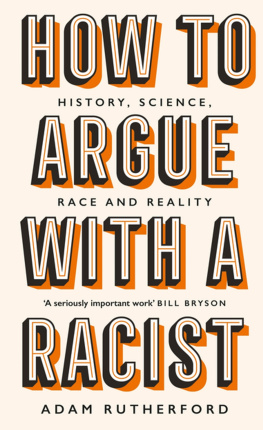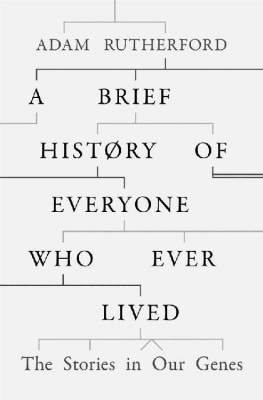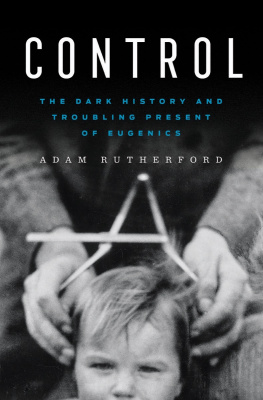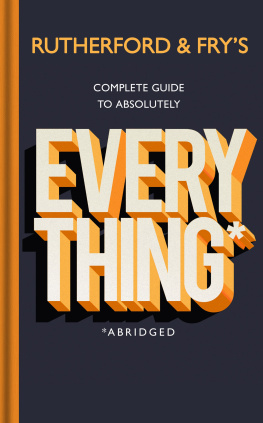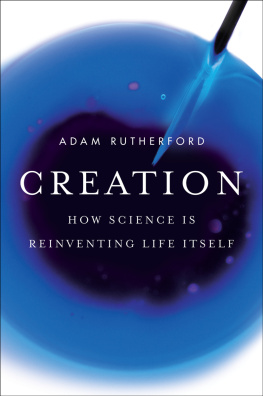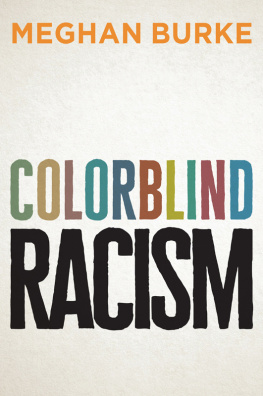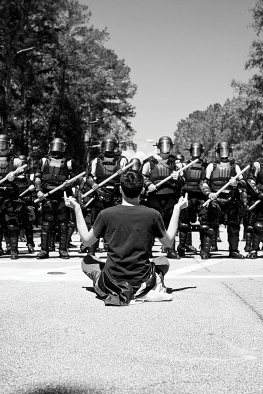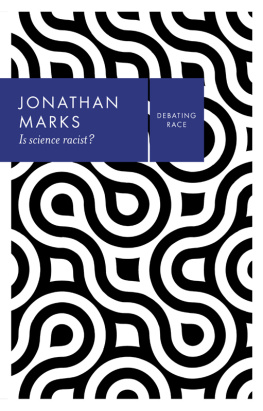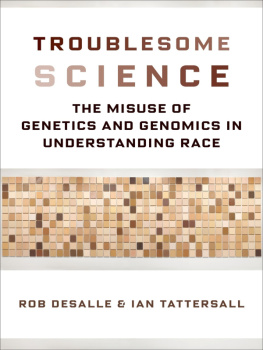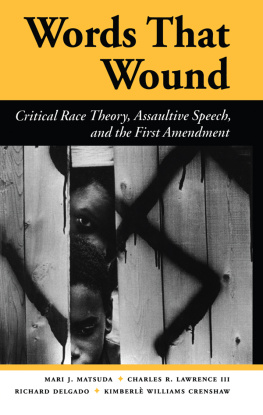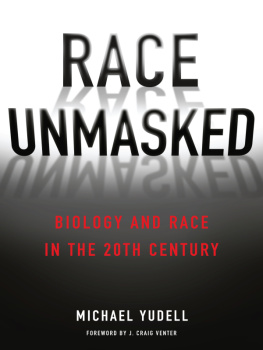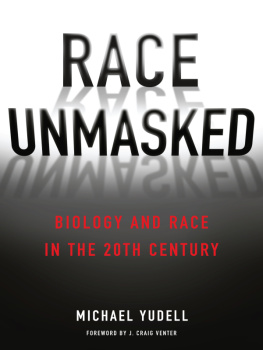For Ananda, Ben, Jake, Nathaniel and all of my more distant sisters and brothers

CONTENTS
The world is a fine place and worth fighting for
Ernest Hemingway, For Whom the Bell Tolls
This is a deliberately concise book, and I have selected only arguments and cases that are illustrative. I will be using terminology that is not without historical baggage. I will be using words such as black and East Asian while simultaneously acknowledging that they are poor scientific designations for the immense diversity within these billions of people. It is an irony that we roughly know what these descriptors mean colloquially while they are potentially incoherent in terms of scientific taxonomy. The semantics of this book and the broader public discourse are important. Though much of the book discusses the validity of the term race, I will be using it, primarily because it is a term that people recognise and use, regardless of its scientific validity. Population, ancestry and lineage are all terms that are more useful as discussions of human evolution and diversity become more technical. This book is largely focused on racism derived from Western and European cultures, partly because these are my cultures, but also because the concepts of race that we are broadly globally wedded to emerged in Europe and were enshrined in culture alongside European expansion, the emergence of science as we recognise it today and the values of the Enlightenment.
This book is a weapon. It is written to equip you with the scientific tools necessary to tackle questions on race, genes and ancestry. It is a toolkit to help separate fact from myth in understanding how we are similar and how we are different.
Our story began in Africa. The earliest known members of our species Homo sapiens evolved in what is now Morocco around 300,000 years ago, though most early remains are from the east of Africa. We are starting to think that in the beginning, we came from a pan-African species, a mixture of diverse populations from around that mighty continent. We know that some early humans migrated into Asia and Europe within the last quarter of a million years, but their dominion outside of Africa was temporary, and they probably leave no descendants today. Around 70,000 years ago another group of people drifted away from Africa, and the process of setting down new roots all over this planet began. Much of our global success is a result of local adaptations, fine-tuned by evolution to best survive environments on an ecologically diverse planet. Our quintessential nature as wanderers, hunters, farmers and social creatures meant that, over the last few thousand years, Earth has become smaller, and peoples from around the world have met, traded, mated, fought, conquered and a whole lot more. In these interactions, we engage with people who are different from each other. These differences are rooted in biology, in DNA, and also in our behaviour as social animals in our dress, our speech, our religions and our interests. In the pursuit of power and wealth, the fetishisation of these differences has been the source of the cruellest acts in our short history.
The political climate has changed in the last few years. Around the world, nationalism is on the rise, and discussions of race seem to be more prominent in the public arena than in years. Stereotypes and myths about race are expressed not just by overt racists whose voices are amplified by modern technology, but also by well-intentioned people whose experience and cultural history steer them towards views that are not supported by the modern study of human genetics the misattribution of athletic success to ancestry rather than training; the continued assumptions that East Asian students are inherently better at maths, that black people have some kind of natural rhythm or that Jews are good with money. We all know someone who thinks along these lines. The ideas examined in these pages form a scientific description of real human similarities and differences that will provide a foundation to contest racism that appears to be grounded in science. Here, I am focusing on four key areas where we often slip up by adhering to stereotypes and assumptions; I am outlining what we can and cannot know according to contemporary science on the subjects of skin colour, ancestral purity, sports, and intelligence.
It is often easier to make a claim than to refute it, but as racism is being expressed in public more openly today, it is our duty to contest it with facts and nuance, especially if bigotry claims science as its ally. Some scientists are not comfortable with expressing opinions derived from their research where it relates to questions of race. Nevertheless, if you study human genetics the ocean from which human variation is drawn you have little choice but to speak of race.
The visible differences that are the roots of racism are encoded in our DNA. Therefore, science and racism are inherently entwined. Racism is an expression of prejudice, whereas science, in principle, is free from subjectivity and judgement. Reluctance by scientists to express views concerning the politics that might emerge from human genetics is a position perhaps worth reconsidering, as people who misuse science for ideological ends have no such compunction and embrace modern technology to spread their messages far and wide.
But science is a powerful ally, and knowledge of science and of history arms us against preconceptions and prejudice. We have profoundly limited senses and short lives. We crave meaning, and belonging, and identity. Those aspects of the human condition are a rich soil in which prejudice can take root. The tool that grants us the clearest view of how people actually are, rather than how we judge them to be, is science.
I am British. My identity is legally enshrined in my passport, the property of the United Kingdom. It was issued in Ipswich, a town near the East Anglian coast, where I was born.
These are facts. Britain, United Kingdom, Ipswich, East Anglia they are labels that partly define my personal identity. I am also a scientist. I have studied genetics and evolution all my adult life, and I write about how history intersects with those two forces of biology.
In science, we use labels out of necessity. We try to apply rigorous criteria in our labelling to help us categorise the inherent qualities of a thing, so that we might understand its identity, its essential nature or its evolution, or so that we can design experiments that will help us understand its qualities. We call this taxonomy.
I am mixed race, or dual heritage, or biracial. Half-caste is a term which has fallen out of favour, but for much of my life that is how many have described me, some out of habit, occasionally in a dismissive way. I am often asked where I am from, and I adjust my answer by second guessing what they are really asking: Britain, England, Suffolk, Ipswich or London, where I have lived for twenty-five years. All are true, but often, what they are really asking is why do you look the way you do? My father was born in Yorkshire, with both his parents being white and British. My mother is British and Indian, though she has never set foot in India. She was born in Guyana in South America. Her grandparents were shipped there from India in the nineteenth century to work on sugar plantations under the auspices of a colonial edict known as Indenture a form of semi-forced migration and labour that is a shadow of slavery. She emigrated to England in the 1960s, in the wake of the Empire Windrush , the ship that brought 802 Caribbean women and men to begin new lives in Britain in the aftermath of the Second World War. Like them, she was a British citizen invited to the homeland of the colonies as the imperial age waned. They were bidden to help rebuild a country broken by war, and like so many who made that journey, my mother was recruited into the fledgling National Health Service, to attend to the citizens of the United Kingdom.
Next page
